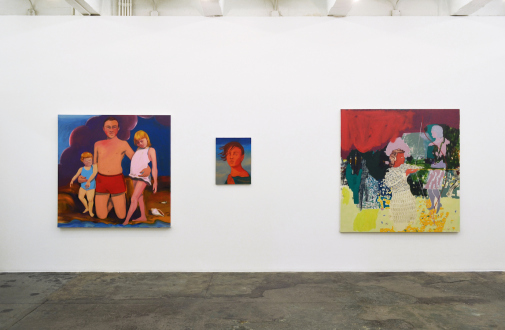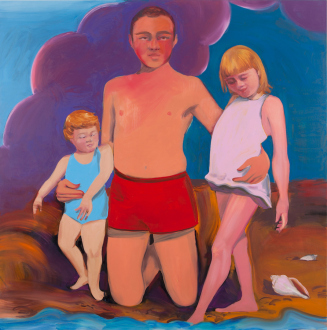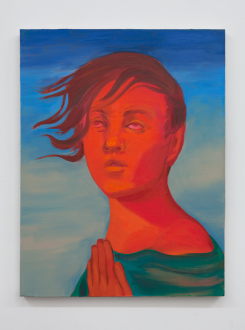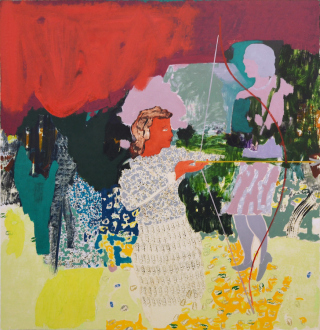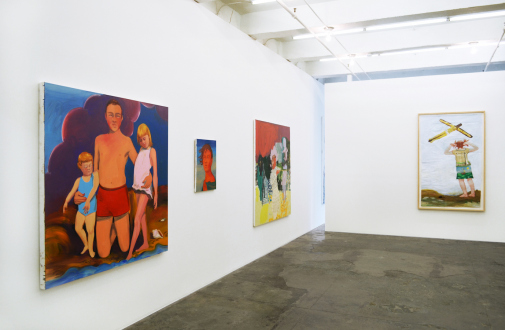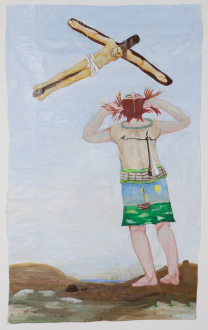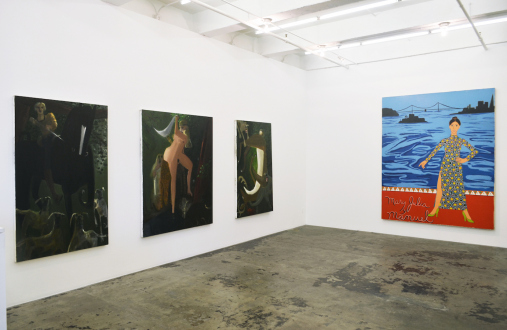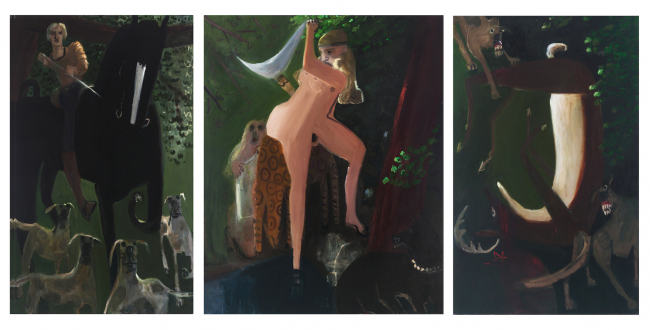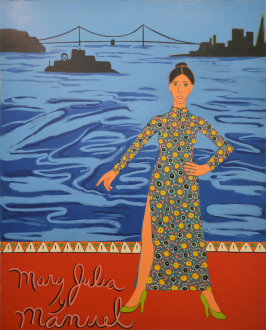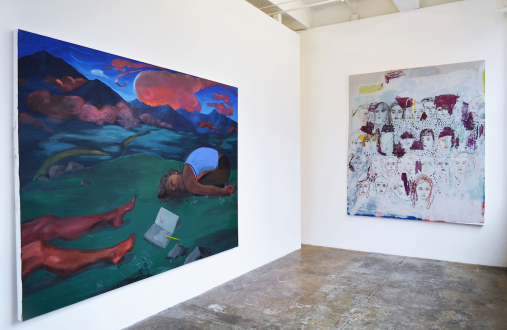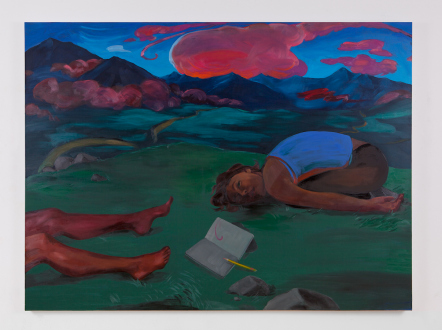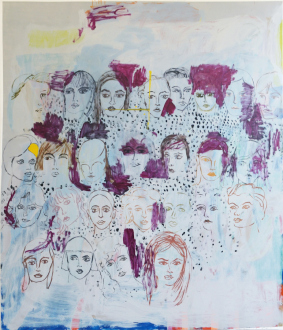Painting Forward – Joan Brown, Charles Garabedian, Jackie Gendel, Haley Josephs, , Kyle Starver (Works)
Selected Works
Joan Brown, Charles Garabedian, Jackie Gendel, Haley Josephs, Kyle Starver
Painting Forward – Joan Brown, Charles Garabedian, Jackie Gendel, Haley Josephs, , Kyle Starver Press Release
Thomas Erben Gallery is pleased to present Painting Forward, an exhibition of works by Joan Brown, Charles Garabedian, Jackie Gendel, Haley Josephs, and Kyle Staver. Recently, figurative painting has undergone a revival. Artists have taken up the genre in ways that break from its earlier resurgence in the 1990s, when figurative painting was still coping with photography’s dominant influence in the decade prior. Painting had been burdened with the need to justify itself in relation to other media, to contemporary culture, and to society at large. Now, the medium has moved beyond this moment, and works by artists of multiple generations are being appreciated under the revival of its earlier history. In the work of these five painters, newly relevant positions are found by abandoning artifice and irony, and depicting subjects in unadorned and direct ways.
Emblematic for this renewal are the paintings of Joan Brown. In Mary Julia y Manuel (1976), a woman poses in front of San Francisco Bay, with Alcatraz island floating above the red-carpet scene. Awkwardly positioned within a shallow ground, her figure appears as an unpredictable agent, with her inner psychological life evident but inscrutable. With their bright colors and flat planes, Brown’s paintings recall the sheen of both pop art and graphic design, while personalizing this formal language with slightly off-handed brushwork.
Haley Josephs’ works are similarly inward-oriented and eloquent. The subjects are painted with a saturated palette and softly rendered features, and in spite of their reserved expressions, the figures exude an intimate depth. In Night Painting – Emergence of Clouds (2016), ornamental motifs reappear as echoes: the curved tendril of a cloud reappears in the dirt road, the page of the notebook, and the woman’s back. Pictorial elements reverberate within the work, yet they remain enigmatic.
This interest in line is shared with Jackie Gendel’s complex composition Sidewalk (2015), in which layers of figures are distinguished by insistent and articulate mark making. The twenty-six gridded portraits of women appear as types, only slightly individualized by the scratchy line-work and purple strokes. Beneath the figures, an under-painted background of bright blocks of color has been washed over. The painting gives the impression of narrative without revealing it: the content is a blend of image and gesture that remains unresolved.
Kyle Staver adopts mythological figures as her subjects. She imbues these iconic individuals with new life, in an almost fairytale reinterpretation. Staver’s technique mirrors its content, as she turns the great tradition of French painting contemporary, with cartoonish rendering, contorted perspectives, and cinematic lighting. As a triptych, Diana & Actaeon (2012) adopts an iconic art historical format, but one that also recalls the cells of graphic novels and comics.
Whereas Staver imbues these archetypes with affection, Charles Garabedian employs myth in a more jarring fashion. The symbolic and mythological references that populate his work are assembled in a disjointed manner, with figures theatrically staged within the picture plane. In the sparsely-set seaside painting Stigmata (2014), Christ appears within a pale sky. A female figure pulls on her own hair as she stares at the cross floating above her. In the pattern of her shirt, the cruciform is replicated as a lamppost, while her position on the shore is mirrored in the seascape of her skirt. These conjoined worlds are idiosyncratic, with deep attention given to figures whose tone and purpose are unknowable.
